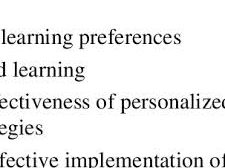When you’re out on the open road in your RV, few things are as comforting as a warm shower at the end of a long day of exploring. However, just like any other appliance, RV water heater repair can sometimes encounter issues that disrupt this simple pleasure. Fear not! In this guide, we’ll walk you through common RV water heater problems, troubleshooting steps, and even some DIY repair options to ensure your adventures remain cozy and comfortable.
Common RV Water Heater Issues
RV water heaters are remarkable appliances that provide hot water on the go, but they can experience a range of problems. Some of the most frequent issues include:
- No Hot Water: One of the most frustrating problems is turning on the tap only to find cold water flowing. This might be due to a faulty heating element, a malfunctioning thermostat, or a tripped circuit breaker.
- Inconsistent Temperature: If your water goes from scalding hot to freezing cold within seconds, there could be issues with the thermostat, the gas supply (for gas water heaters), or the heating element.
- Strange Noises: Banging, gurgling, or rumbling sounds coming from the water heater might indicate sediment buildup, which can affect its efficiency.
- Water Leaks: Leaks around the water heater can result from a damaged pressure relief valve, a faulty drain valve, or deteriorating connections.
Troubleshooting RV Water Heater Problems
Before diving into repairs, it’s essential to diagnose the problem correctly. Here’s a step-by-step troubleshooting process:
- Check Power Source: Ensure the RV is properly connected to a power source or has sufficient propane (for gas water heaters).
- Reset Circuit Breaker: If you have an electric water heater, check the circuit breaker and reset it if necessary.
- Verify Thermostat Settings: Make sure the thermostat is set to an appropriate temperature and hasn’t been accidentally turned down.
- Inspect Gas Supply: For gas water heaters, check the gas supply, pilot light, and burner to ensure proper ignition.
- Flush the Tank: If you hear odd noises or notice a decrease in water temperature, flushing the tank to remove sediment might help.
DIY RV Water Heater Repair
For those who are comfortable with DIY projects, some common RV water heater repairs can be tackled on your own:
- Replacing Heating Element: If the water isn’t getting hot enough or not at all, a faulty heating element might be the culprit. This can often be replaced with basic tools.
- Cleaning the Tank: Sediment buildup can be resolved by draining and flushing the tank. Remember to turn off power sources before starting this task.
- Addressing Leaks: If you’ve identified the source of a leak, replacing a faulty valve or tightening connections can often solve the problem.
When to Call a Professional
While DIY repairs can save you money, certain water heater issues might require professional expertise. Complex electrical problems, gas supply issues, and extensive leaks should be handled by qualified technicians to ensure safety and proper functioning.
Conclusion
Your RV’s water heater is a crucial component for your comfort on the road. By familiarizing yourself with common issues, troubleshooting techniques, and basic repairs, you can keep your adventures warm and worry-free. Remember that safety is paramount, and if you’re ever unsure, it’s best to consult a professional RV repair service. Enjoy your travels with the confidence of having a dependable source of hot water wherever you roam.



